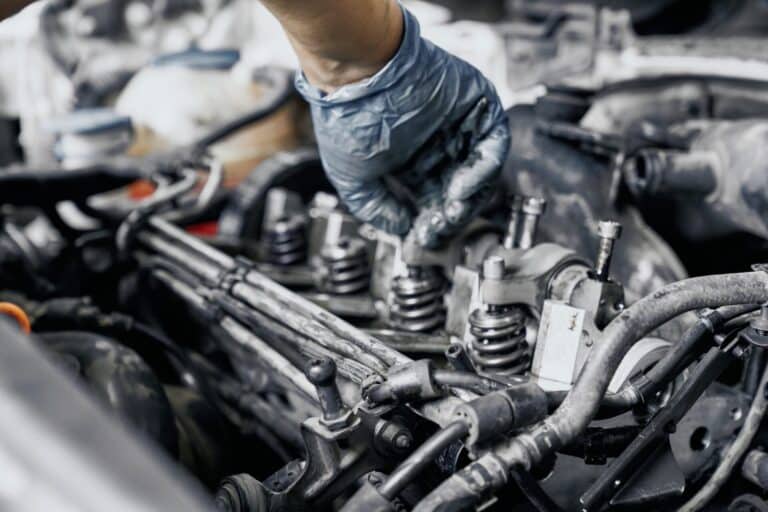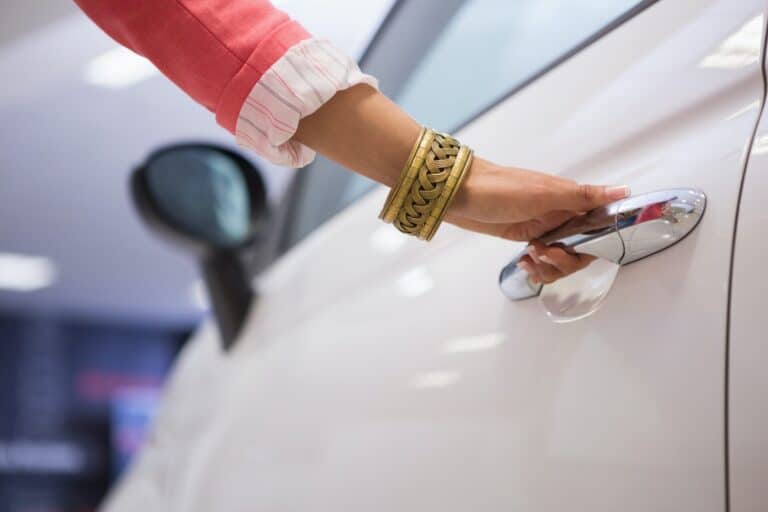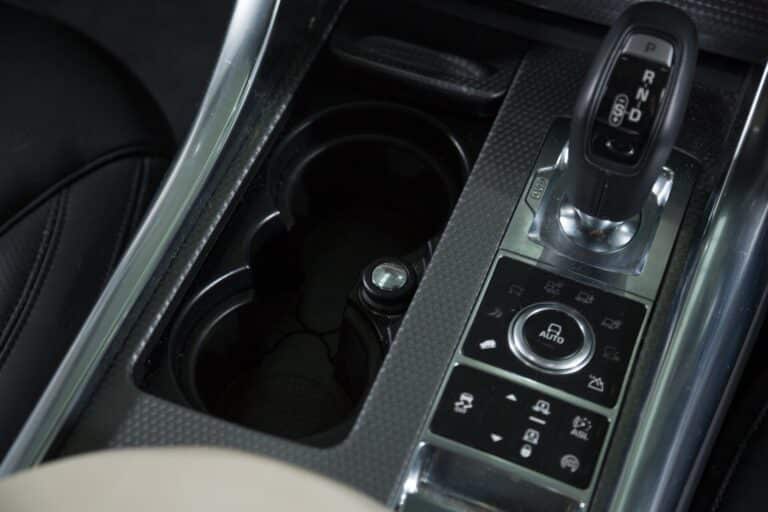Challenger 392 Pulsating Rotors (Must Know Things)
Driving a car with pulsating rotors is quite risky.
It’s so dangerous hearing a grinding, scraping, or squeaking sound, feeling the steering wheel shake, or the brake rotors pulse while applying the brakes in your vehicle.
It’s necessary always to change your car brakes, but that doesn’t mean the lifespan of your brakes has ended because of these symptoms.
A variety of factors causes the Challenger 392 Pulsating Rotors. Besides, prior knowledge of these causes will prevent you from spending so much on repairs. Instead, to get the most out of your brake system, you must devise means to fix the pulsating rotors and prevent future occurrences.
What is Brake Pulsation?
Brake pulsation occurs when you press the brake pedal, and the brake is hot. It usually implies that there’s an issue with the brake rotor.
You could notice signs like shaking in the seat (a problem with the rear brakes), shaking in the steering wheel (mostly with the front brakes), and pulsation of the brake pedal.
Why Do My Brakes Feel Like They Are Pulsating?
Normally, brake rotors get hot when they cover long distances (and get to 1400°F).
However, this high temperature doesn’t cause its pulsation. So I’m sure the next question you’re already hitching to ask is, ‘why then do my brakes feel like they are pulsating.’
The entire answer lies in how well you understand the working of friction and how heat spots on the rotors cause pulsating brakes.
There are two major mechanisms of friction at work in every car:
- Abrasive friction and;
- Adherent friction
Abrasive friction occurs when the surface and the rotor rub off on themselves.
In contrast, adherent friction occurs when the chemicals bond between the rotor and the brake pad break, creating a resisting force that stops the vehicle.
It is adherent friction that stops the car.
The brake pad leaves material on the rotor, and more materials deposit as the pad gets hotter. These deposits result from the glue (resin) in the pad.
The glue becomes a liquid when the pads get hotter, allowing materials to deposit on the rotor.
When the rotor overheats, you’ll notice the glazed material looking like someone brushed syrup on the rotor.
It is that resin glazing that forms a high spot on the surface of the rotor.
A high spot is also formed on the rotor when you hot stop and clamp down on the brake. How Does Brembo Brakes Work?
The most effective way to prevent friction deposits or glazing is to install drilled rotors. These rotors will help prevent the pads from glazing by keeping them cooler.
What Causes Brake Rotors To Pulsate?
When your brakes start pulsating or jerking, it’s most likely that there’s a defect in your brake rotor.
There are diverse causes of pulsating brake rotors. Some of them include:
#1. Warped Rotors
When the rotors warp, it can cause the brake pedal to pulsate. In some drum systems, the strong spring pulls the brake shoes to the drum.
But, in the newer models of the disc brake systems, the resilient rubber seal is what pulls the pads to the rotor (disc).
Warped rotors cause the pads to wear out prematurely even if the rubber seals don’t fail.
The warped rotors scrape against the pad and wobble as they turn. Once the pad wears out, the metal backing plate will damage the rotor.
#2. Wrong Installed Rotors
Another cause of pulsating brake rotors is the wrong installation of the rotors.
This improper installation will cause the pulsation to persist and even get worst.
Unfortunately, the features of this device are designed for a particular purpose and have very little ability to withstand error.
When you do not properly install your brake rotors or pads, it can cause brake failure and more serious damage in extreme cases.
Therefore, it’s very important to use the right reinstalling techniques after servicing.
During the installation process, make sure to clean and take out the rust from any of the brake parts to avoid excessive grinding and friction.
#3. Heat Spots on Rotors
Each part in your brake system is specifically designed to function within a particular temperature.
So, exposing your car to excessive heat due to friction can cause severe damage to your brake rotors and pads.
When your brake rotors overheat, the resin materials on your brake pads will melt and glaze onto the rotors, forming uneven heat spots on the braking surface.
In minor cases, these heat spots can cause vibration, shaking, and noise, while in more serious cases, it can lead to brake failure or increased brake speeds.
#4. Damaged Flex Hose
The brake line hose supplies fluid to the brake caliper. If it tears, twists, or collapses, it can cause damage to the brake rotors and extension of the braking system.
#5. Frozen or Stuck Brake Caliper Slides
The brake caliper slides can only move freely with grease. If there’s no grease and they get stuck, the brake pads will start wearing out, damaging the rotor.
#6. Broken Brake Caliper Piston
When the brake caliper breaks, it won’t be able to retract or expand, leaving the brake pads to remain in contact with the rotor.
This contact will result in pulsating brakes and wearing out of the brake rotors.
#7. Stuck Brake Pads
When the brake pads are stuck, they won’t be able to move freely around the brake caliper bracket to press into the rotors.
If a pair of brake pads press against the rotors, you’ll feel your brakes pulsating.
How Much Does It Cost To Fix Pulsating Brakes?
Averagely, the cost of brake pads ranges from $30 to $50 for a wheel.
For optimal performance and prevention of persistent brake pedal pulsation, you should replace the rotors whenever you replace the brake pads.
The average cost of a brake rotor is around $40 to $70 per wheel. Therefore, a DIY brake replacement costs about $140 to $240 per axle.
If you’re considering paying an expert to replace your brakes, consider the labor cost too. The extra cost will increase the overall cost of fixing your pulsating brakes.
The cost of labor varies but is mostly around $200. If you include labor, your total cost of brake repair will be between $350 to $500 per axle.
Additionally, some of the factors that affect the cost of replacing pulsating brakes include:
#1. Kind of Vehicle
The cost of brake rotors varies depending on the kind of vehicle.
For example, a rotor for a Ford Focus will cost less than that of a Ram. The heavier and bigger the vehicle, the higher the cost.
#2. Paying an Expert vs. DIY
You’ll save money when you replace your brake rotors yourself.
However, the braking system is an important part of every car, so paying an expert will keep you away from danger on the road.
#3. Brand of Vehicle
Generally, the cost of replacement parts for European car models like Jaguar, BMW, and Mercedes, is more expensive than the American makes.
Also, the labor cost may vary depending on the repair shop, as some vehicles may take some technicians more time to fix.
How Do You fix Pulsing Brakes?
Taking your car to a repair shop will cost more than a simple DIY.
However, at the shop, they’ll replace the brake pads and the brake rotors (otherwise called discs) that create the friction required to slow down.
You could replace the brake pads and rotors, but that is not a job for beginners.
Nevertheless, to fix pulsing brakes yourself, here are the steps to follow:
- Take out both wheels on the axle
- Take out the brake calipers from the rotors
- Remove the brake pads and rotors
- Lubricate the rotors
- Install the new brake pads and rotors
- Fix the brake calipers again
- Check the level of the brake fluid
- Repeat the steps on the other wheel
Notwithstanding, if you don’t feel like that’s something you can do yourself, do well to take your car to a professional.
You wouldn’t want to cause more damage to your car. How Does Heavy-Duty Brake Work?
Conclusion
Numerous factors can cause noisy, wobbling, shaking, or pulsating brakes in your vehicle.
However, using high-quality car parts and properly installed rotors, brakes, and wheels will significantly reduce the risk of pulsating rotors or brake issues.
Besides, you’ll not only be keeping yourself safe but also saving money and time. Lastly, make sure to service and maintain your car regularly.






